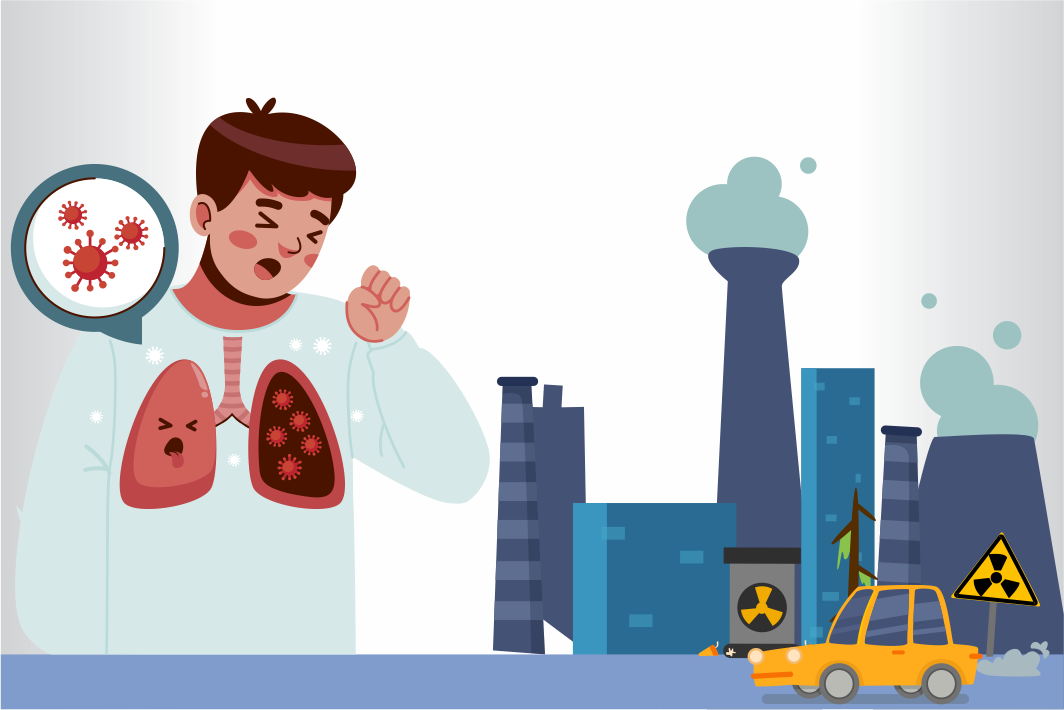The
higher incidences of cancer in India are alarming, and lung cancer is one of
them. In India, lung cancer accounts for 5.1 percent of the total cancer. The
worry is that cancer among non-smokers is on the rise. According to The Lancet,
Indians are prone to lung cancer 10 years earlier than people in the West.
Patients succumb to the disease as the cancer cells start spreading to other
organs fast.
Causes
Smoking
is one of the leading causes of lung cancer. Yet, air pollution, environmental
conditions, etc, are contributing factors. Genetic mutations also play a role
in propagating cancer. A person suffering from tuberculosis can get infected
with cancer.
Smoking
cigarettes and beedis are a common thing in urban and rural areas. The male
population is more prone than females when it comes to lung cancer. Women in
rural areas also indulge in smoking, which has been prevalent for ages.
Symptoms
The
initial stages of lung cancer have lesser-known symptoms. As a result, it is
hard to diagnose the disease in the initial stages. Once the disease
progresses, the symptoms are prominent. Consistent cough, chest pain, breathing
difficulty, bloody sputum, etc, are the symptoms. A patient in the later stage
encounters weight loss, fatigue, loss of appetite, etc.
Finger
clubbing is another symptom where the fingers take a peculiar shape.
Among
non-smokers
As
mentioned earlier, non-smokers are at a similar risk of lung cancer. Air
pollution is a major concern in India, and the burning of fossil fuels is a
major concern in rural areas. Smoke emanating from traditional chulha,
vehicles, diesel exhaustion, etc., are some contributing factors.
Rural
folks are at significant risk. People around a chain smoker are at a high risk.
The young generation addicted to vaping, a form of smoking, can do much damage
to the lungs.
Precautions
Medical
diagnoses always insist on quitting smoking cigarettes, bidis, etc.
Cancer
specialists recommend chest X-rays, CT scans, MRIs, and PET scans. These
procedures help determine the current stage of disease progression. A
microscopic analysis of sputum can detect the presence of lung cancer cells. A
biopsy is also carried out to determine the presence of the cancer cells.
Cancer
treatment revolves around radiation therapy, chemotherapy, and surgery. Lung
cancer treatment is no exception to this. The patient needs to receive the
treatment based on how their disease progress
es.
A
remission or the term ‘no evidence of disease’ for five years can cure lung
cancer.
Need
to do more
Heightened
awareness levels have attenuated the crisis to a certain extent. Strict
regulations will help eradicate lung cancer. It is difficult to curb smoking
and vaping both in rural and urban areas. This results in health cautions being
wholly ignored.
A
healthy, pollution-free environment can do the needful. Avoiding fuels that
cause pollution is the need of the hour.
Regular
body checkups, blood tests, and monitoring of symptoms are the keys to
recovery.
It is high time we all say
no to smoking, use clean fuel, and keep our environment pollution-free. This
will help to prevent lung cancer.





